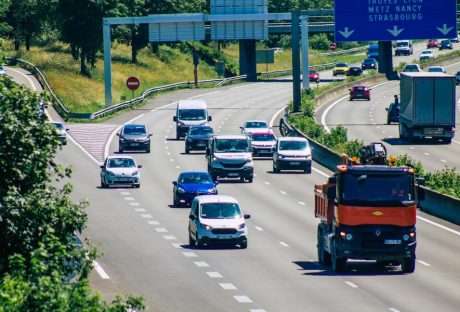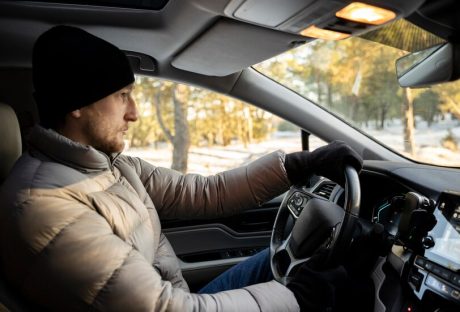Riding a motorcycle offers a sense of freedom and adventure, but it also comes with inherent risks. As a motorcyclist, your safety should be a top priority every time you hit the road. While honing your riding skills and practicing defensive driving techniques are crucial, investing in the right motorcycle equipment can provide an additional layer of protection in the event of an accident. In this blog post, we’ll explore the safest motorcycle equipment that every rider should consider wearing to stay safe on the road.
Helmet
A high-quality helmet is the single most important piece of safety equipment for any motorcyclist. In the event of a crash, a helmet can significantly reduce the risk of head injuries and traumatic brain injuries. When choosing a helmet, opt for one that meets or exceeds safety standards, such as the Department of Transportation (DOT) or Snell certification. Look for features such as a sturdy outer shell, impact-absorbing liner, comfortable padding, and a secure chin strap. Additionally, make sure the helmet fits snugly and securely on your head to provide maximum protection.
Protective Riding Gear
In addition to a helmet, wearing protective riding gear can help safeguard your body from injuries in the event of a crash or slide. Invest in a durable motorcycle jacket made from abrasion-resistant materials such as leather or textile, with built-in armor in critical areas like the shoulders, elbows, and spine. Pair the jacket with armored riding pants or jeans, which offer added protection for your legs and hips. Don’t forget to wear sturdy motorcycle gloves to protect your hands and wrists from abrasion and impact injuries.
Riding Boots
Proper footwear is essential for maintaining control of your motorcycle and protecting your feet and ankles in the event of a crash. Choose motorcycle-specific riding boots with reinforced soles, ankle support, and impact protection. Look for boots made from durable materials such as leather or synthetic textiles, with non-slip soles for optimal grip on foot pegs and pavement. Avoid wearing sneakers or other casual shoes, which offer little to no protection in the event of an accident.
Eye Protection
Protecting your eyes from wind, debris, and insects is essential for maintaining visibility and safety while riding. Invest in a good pair of motorcycle goggles or a full-face helmet with a built-in visor or face shield. Look for eye protection with anti-fog and UV-resistant coatings for optimal clarity and comfort in various riding conditions. Additionally, consider carrying a spare visor or anti-fog treatment for long rides or inclement weather to ensure clear vision at all times.
Reflective Gear
The Cherry Hill motorcycle accident attorneys make it clear that visibility is crucial for staying safe on the road, especially when riding at night or in low-light conditions. Incorporating reflective gear into your riding ensemble can help increase your visibility to other motorists and reduce the risk of accidents. Wear a reflective vest or jacket with reflective strips, or add reflective tape to your helmet, jacket, and motorcycle to enhance visibility from all angles. Consider investing in reflective decals or accessories for your motorcycle, such as wheel stripes or side reflectors, to improve visibility even further.
Motorcycle Armor
For riders who engage in off-road or high-speed riding, motorcycle armor provides an extra layer of protection against impacts and abrasions. Motorcycle armor typically consists of hard plastic or composite panels strategically placed on key areas of the body, such as the chest, back, shoulders, elbows, and knees. Integrated into a compatible motorcycle jacket or pants, armor enhances protection without sacrificing comfort or mobility. Look for CE-certified armor for optimal impact resistance and shock absorption.
Riding a motorcycle can be an exhilarating experience, but it’s essential to prioritize safety every time you hit the road. Investing in the safest motorcycle equipment is crucial for protecting yourself from potential injuries in the event of an accident. By wearing the right gear and practicing safe riding habits, you can enjoy the thrill of motorcycling while minimizing the risks associated with this exhilarating mode of transportation.
High Visibility Vest
Reflective motorcycle vests with high visibility are extremely important in case you are riding during the night or in darker areas. They are cost-effective and provide the necessary safety for your adventure rides. Road crews and highway workers wear them for safety reasons. Similarly, you, too, must utilize this safety tool to maximize visibility.
These vests are available in many different materials. They offer reflective and high-visibility colors to help alleviate safety concerns. So if you do not have one, you must get one. A high-visibility vest is a great option for riding in high-traffic as well as high-density population areas. These vests will save you from dangerous situations. You may want to stay comfortable, but safety is key. Protective and preventive motorcycle safety gears keep you safe while you take on the challenges on the road. They do not let safety become an obstacle in the path to your limitless thrill.
Earplugs
One of the most important items of safety gear for motorcycle riders is earplugs. You may not be riding a throaty cruiser with its V-twin engine. Bikes, however, are noisy. If you add traffic and wind noise to the already loud party, ear fatigue is not too far away. The excessive exposure to this high-decibel noise will start to set in for sure.
In order to protect your hearing, use industrial use foam plugs to keep your ears safe. Some of them are inexpensive, but a higher-quality plug will offer a better fit as well as better attenuation. It will be a far better choice to invest in a set of custom-made plugs. Our ears are unique, similar to fingerprints. There are many motorcycle companies that offer earplugs that are designed especially for motorcycle riding. Even audiologists can make you a custom-fitted pair within a week or two.
Wrapping Up
It is crucial to wear safety gear amid the right clothing when riding a bike. You could be riding a moped or even a high-performance bike. As serious as crashing on a bike sounds, the right equipment will help keep you ready for all situations. There are safety helmets and eye protection to consider. Visors and goggles will keep your eyes from getting injured and increase on-road visibility. Safe riding is not just a personal choice, it is also a legal requirement to make sure that you get the right protection while on the road.
If you have thoughts to share or questions to ask, please leave a comment below. We would love to hear from you!
Read Also:






















